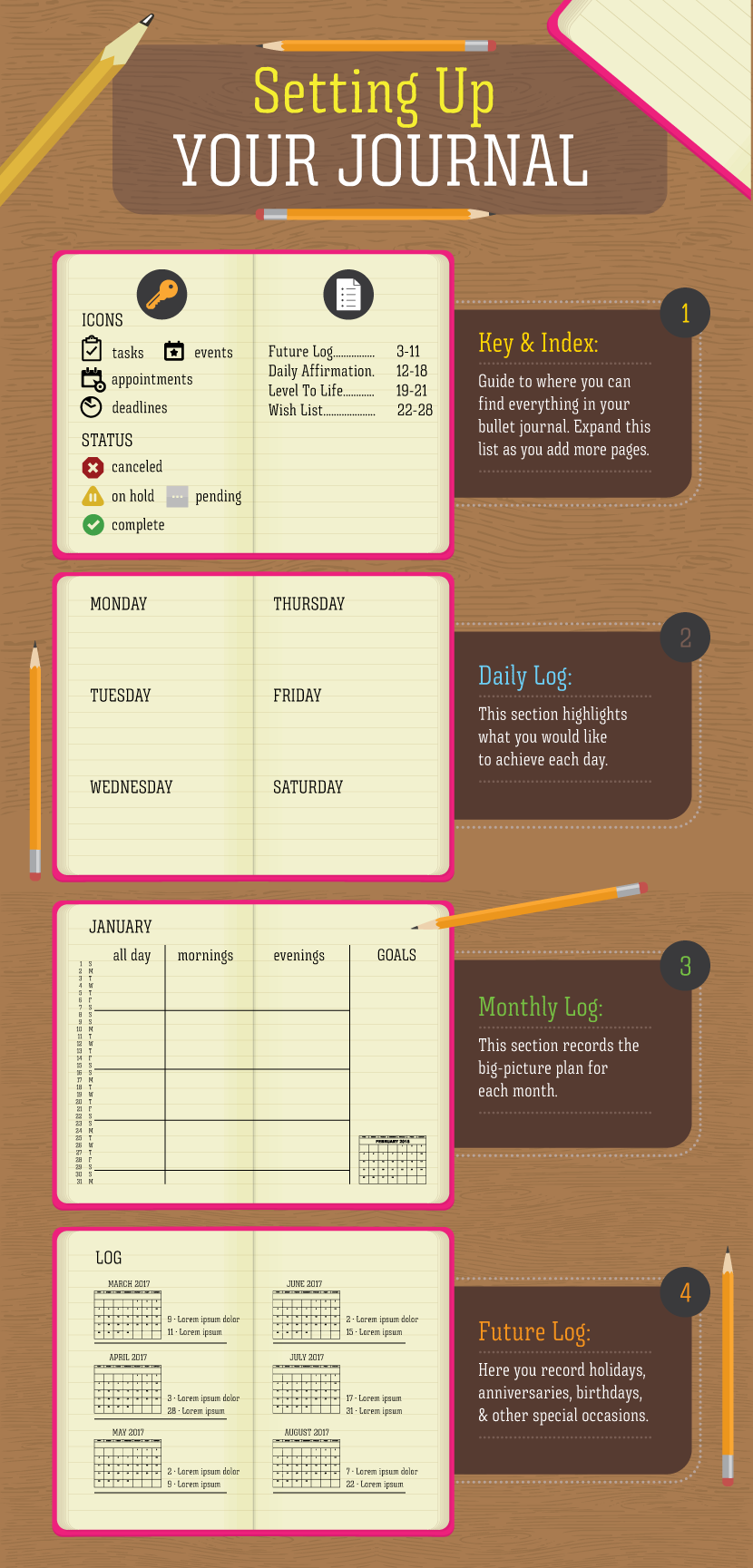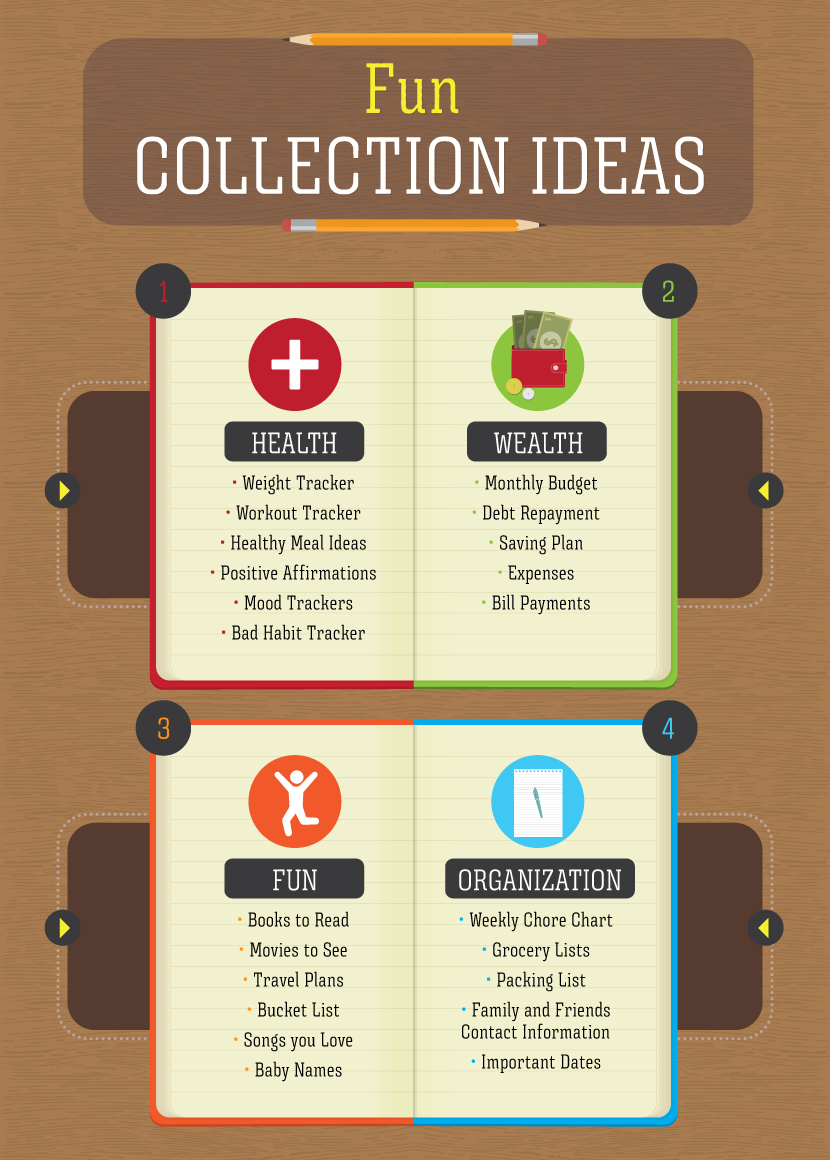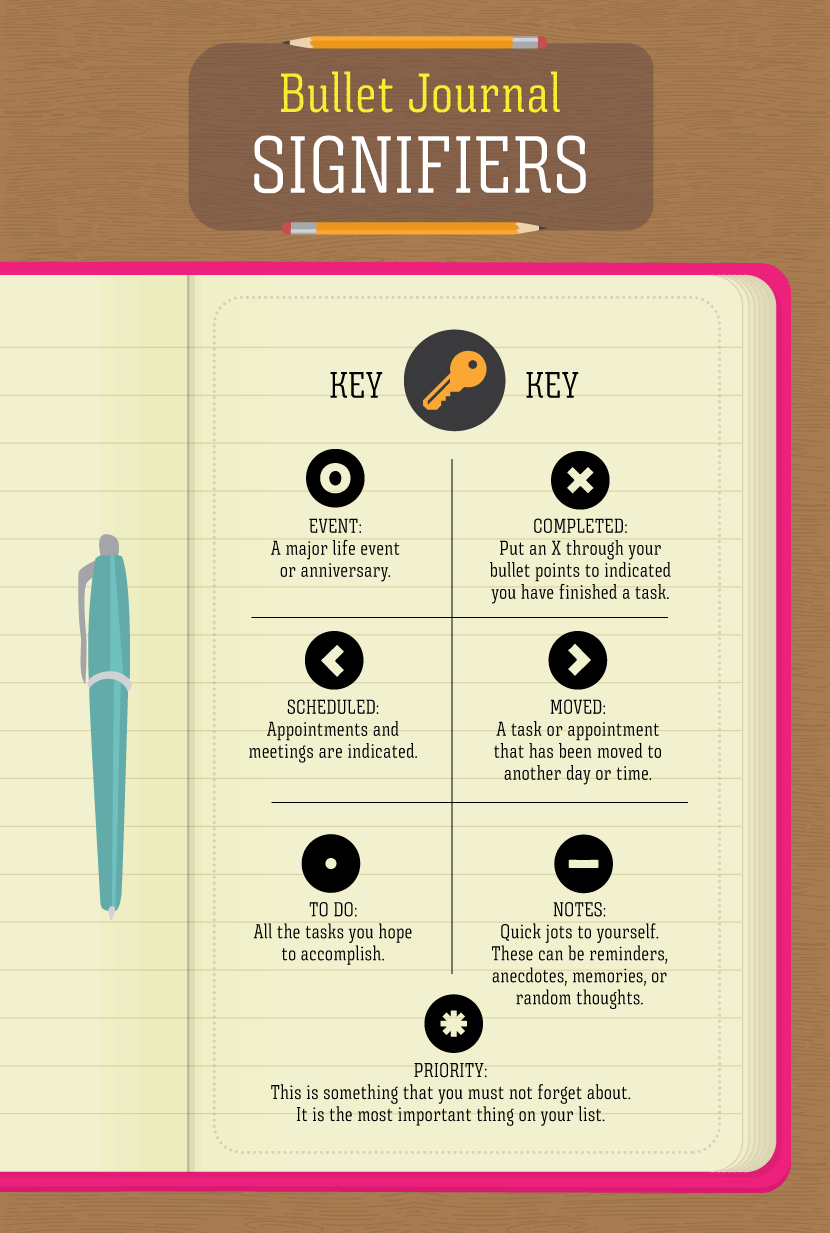Bullet Journaling:
Everything You Need to Know Before Getting Started
Journaling has been a pastime that has been around as long as teenagers have needed an outlet for their angst.
As we get older, our journals are often swapped out for day planners, appointment reminders, and to-do lists.
Occasionally, when we remember, we leave notes in their margins about funny anecdotes or personal achievements,
but most of the time we neglect the journaling teen we once were and the daily minutiae passes without note.
It isn’t until you dig out an old journal that you wish you had kept it up through the years to remember all the forgotten moments.
Shopping List
Bullet journaling is a new trend that combines day planners and daily journaling. Think of it as a DIY journal.
Like any DIY project, there are some basic materials that you should invest in before beginning.
Below is a checklist of the basic materials required to start a bullet journal.
This list is just a suggestion, and you can add to or subtract from it to reflect your own creative process.
- Journal: While you can use any journal for bullet journaling, there are a few journals that are popular among the bullet journaling community.
Most journalers love the dotted Moleskine and the Leuchtturm1917. They both have thick pages, so your ink won’t bleed through and there is minimal feathering when using fountain pens.
They also have elastic closures and a back storage pocket. Whichever journal you choose, make sure it is small enough so that you can carry it with you – not so big that it becomes a chore to tote around.
- Pens: It’s important to choose a pen you absolutely love for your bullet journaling endeavor.
Do you prefer gel, ballpoint, felt, fountain, erasable, or rollerball? The options are endless. Luckily, most stationery and paper shops will allow you to try a pen before purchasing!
- Ruler: A 12-inch clear ruler might seem like an easy choice, but you want to keep portability in mind. Opting for a 6-inch ruler will make it easier to tuck away in your journal and tote with you.
Your ruler will be used to outline your monthly and yearly calendar, as well as any charts and grids you want to incorporate into your journal. While you don’t need a rule, it will keep your lines crisp and structured.
- Optional Extras: Your bullet journal is all about personal expression, so if you want to emboss, color, sticker, and doodle on your pages, go for it! Washi tape is a very popular must-have extra among bullet journalers.

Learning the Lingo
The first thing you will to realize about bullet journaling is that it has its own language: a mix or hieroglyphics and fancy terms.
Here is a quick rundown of all the keyword pages and symbols you will need to know.
Index: Leave the first few pages of your journal blank. These pages will be used as your index, and titled accordingly.
The first thing you should do when you get your journal is number the pages.
As you create new pages in your bullet journal, record the corresponding page title and the page number on your index pages.
This will come in handy when you need a quick reference to specific lists or calendars, or for tracking goals.
Daily Log: The core of your journal. Your daily log is where you can create and update your to-do list, write your affirmations and goals, and track your daily activities.
For some people, each day of the year will have its own page, while others prefer to allocate two days per page.
This is a personal preference that should reflect how in-depth you want your daily log to be.
Pro Tip: If you have too many tasks in your daily log, you might begin to feel overwhelmed.
In this case, you might want to consider creating a weekly log, where you can record all the tasks with flexible completion dates.
This will reduce the amount of stress you feel when reviewing your daily log.
Monthly Log: Allocate two pages for each month at the start of your bullet journal. These pages are going to serve as an overview for each month.
They do not need to go into the same detail as your weekly or daily log.
Number each line to reflect every day of the month, and create three columns that run through your daily rows. Label these columns morning, afternoon, and evening.
This will help you easily track appointments and commitments.
Monthly Task List: On the same page as your monthly log, section off an area to record your monthly tasks or goals.
These are things that you want to complete or achieve in the indicated month.
Rapid Logging: This is a section of your journal for quick notes and reminders.
Each month should have a page allotted for rapid logging. You can quickly jot down random thoughts, quotes you find inspirational, great songs, new restaurants, etc.
Future Log: You will need four pages for your future log. Divide each page into three rows and title them by month.
In this section you will record anniversaries, birthdays, holidays, and appointments that need to be booked well in advance.
Think of your future log as a broad year in review.
Migration: Everyone morning, skim through your journal and record the tasks you didn’t complete the day before on your current day page.
At the end of the month, you can review all of your tasks and assess what went well and was successful,
what you didn’t complete, and what you want to remove from the list.
If there are still tasks remaining at the end of the month, migrate them to the next month’s calendar.
Collections: This is a fun part of bullet journaling where you get to track your activities, meals, workouts, and so on.
Some people will create lists of favorite recipes they’ve tried, while others prefer to list all the books they hope to read.
Whatever your passion, collection pages will help you remember what you’ve accomplished and what you strive to try.

Signifiers 101
Signifiers are quick ways to organize and classify your task lists and daily and month logs.
While you can use any symbol you want, there are some standard icons used by bullet journalers.
Whatever you decide to use, make sure you create a legend at the start of your journal describing each one.

Who Benefits from Bullet Journaling?
Bullet journaling is more than a way to organize your day-to-day tasks. If you are living with attention deficit disorder or attention deficit hyperactivity disorder,
planning a large event such as a wedding, or just someone who is always on the go and taking on new commitments,
having an outlet to record all your thoughts and ideas can aid in staying organized and reducing daily stress.
Writing everything down in one spot eliminates the need for you to remember everything and gives your mind the chance to relax.
The personalized sections and lists means there is an orderly section for everything, and the index makes it easy to find and review.
Bullet journaling can be done by anyone. The key to being successful at bullet journaling is to throw the rule book out the window and allow your personal creativity to shine.
Get inspired by these suggestions, but don’t be afraid to add your own unique touch to the pages. This will keep you coming back and updating it regularly.
Bullet journaling shouldn’t feel like a chore – it should become part of your daily routine, just like your morning coffee.
Embed the article on your site

